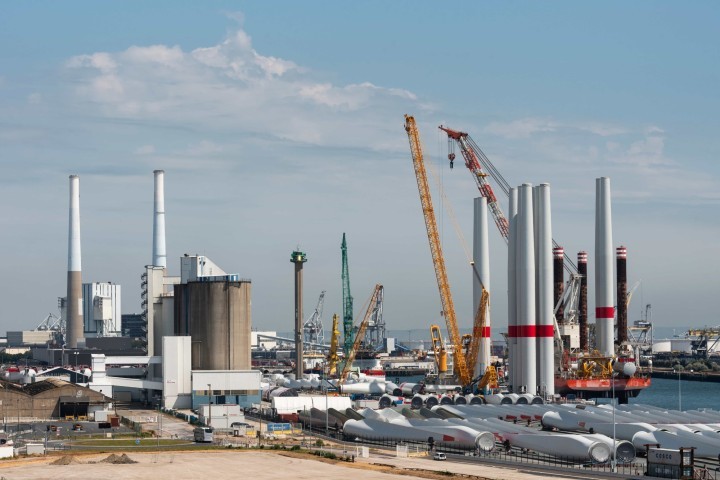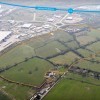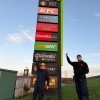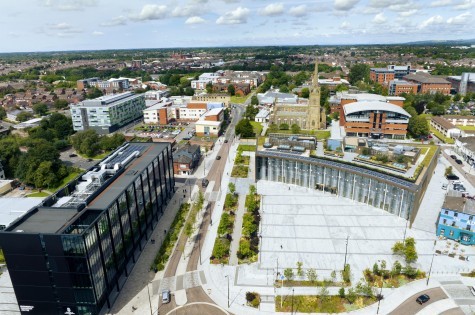Wind energy is a rapidly growing sector in the renewable energy industry, with wind turbines being a common sight in many regions around the world. These towering structures harness the power of wind to generate electricity, contributing to a cleaner and more sustainable future.
The installation of wind turbines is a complex and carefully orchestrated process that requires expertise and precision.
Site Selection
Before the installation process can begin, an appropriate site must be selected for the wind turbines. Several factors come into play when choosing the right location, including wind resource assessment, land availability, environmental impact, and proximity to transmission infrastructure.
Wind resource assessment involves measuring the wind speed and direction at various heights to determine the potential energy yield of the site. Land availability is crucial to ensure there is enough space for the turbines and their associated infrastructure. Environmental impact studies are conducted to assess the potential effects on wildlife, habitats, and local communities.
Finally, proximity to transmission infrastructure is essential to efficiently connect the generated electricity to the grid.
Pre-Construction Surveys and Permits
Once a suitable site is identified, pre-construction surveys and obtaining necessary permits are vital steps in the installation process. These surveys involve environmental impact assessments, archaeological studies, and land surveys to ensure compliance with regulations and to mitigate potential risks. Permits from local authorities are required to proceed with the construction and installation activities.
Access Road and Foundation Construction
Before the actual wind turbine installation can take place, an access road needs to be constructed to provide transportation for heavy equipment and materials. The road is built to withstand the weight of trucks and cranes that will be used during the installation process.
Following the road construction, the foundation for the wind turbine is prepared. The type of foundation depends on various factors, including soil conditions and turbine size.
Common foundation types include shallow foundations, such as spread footings or mat foundations, or deep foundations, such as piles or caissons.
Transportation and Erection of Tower Sections
Once the foundation is ready, the transportation and erection of tower sections can begin. Wind turbine towers are typically constructed in multiple sections, which are transported to the site and then assembled.
Tower sections are transported using specialised vehicles, such as trucks or trailers designed to carry heavy loads. At the installation site, cranes are used to lift the tower sections into position and secure them to the foundation.
This process requires careful coordination and precision to ensure the stability and integrity of the tower.
Installation of Nacelle and Rotor
After the tower is erected, the nacelle and rotor assembly can be installed. The nacelle houses the main components of the wind turbine, including the generator, gearbox, and control systems.
It is lifted to the top of the tower using cranes. Once in position, it is securely attached and connected to the tower. The rotor, consisting of the blades and hub, is then mounted on the nacelle.
The blades are carefully aligned and attached to the hub, and the entire rotor assembly is hoisted into place using specialised lifting equipment.
Electrical and Mechanical Installation
With the nacelle and rotor in position, the electrical and mechanical installation can begin. Electrical cables are connected to the generator, control systems, and transformers, enabling the transmission of electricity generated by the turbine.
The mechanical components, such as the yaw system (which allows the turbine to turn and face the wind) and the pitch system (which adjusts the blade angle for optimal performance), are also installed and calibrated.
These systems ensure the turbine operates efficiently and responds to changing wind conditions.
Testing and Commissioning
Once all the components are installed, the wind turbine undergoes extensive testing and commissioning. This process involves checking the electrical connections, calibrating the control systems, and conducting performance tests to ensure the turbine functions safely and efficiently.
Turbines must meet stringent quality standards and comply with industry regulations before they can be connected to the grid and start generating electricity.
Grid Connection
After successful testing and commissioning, the wind turbine is ready to be connected to the grid. This involves installing transformers and other equipment necessary to step up the voltage and synchronise the turbine's output with the grid. Grid connection allows the electricity generated by the wind turbine to be distributed and used by consumers.
Post-Installation Monitoring and Maintenance
Once the wind turbine is operational, ongoing monitoring and maintenance are essential to ensure its optimal performance and longevity. Regular inspections, maintenance activities, and performance monitoring are conducted to identify and address any issues promptly. This helps maximise energy production, minimise downtime, and extend the lifespan of the turbine.


















